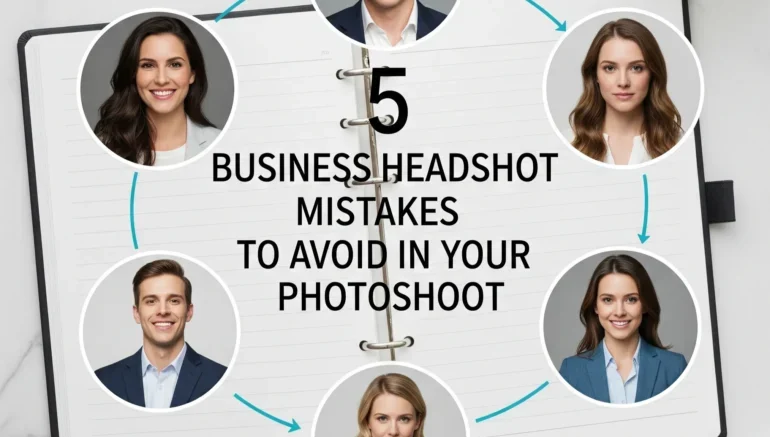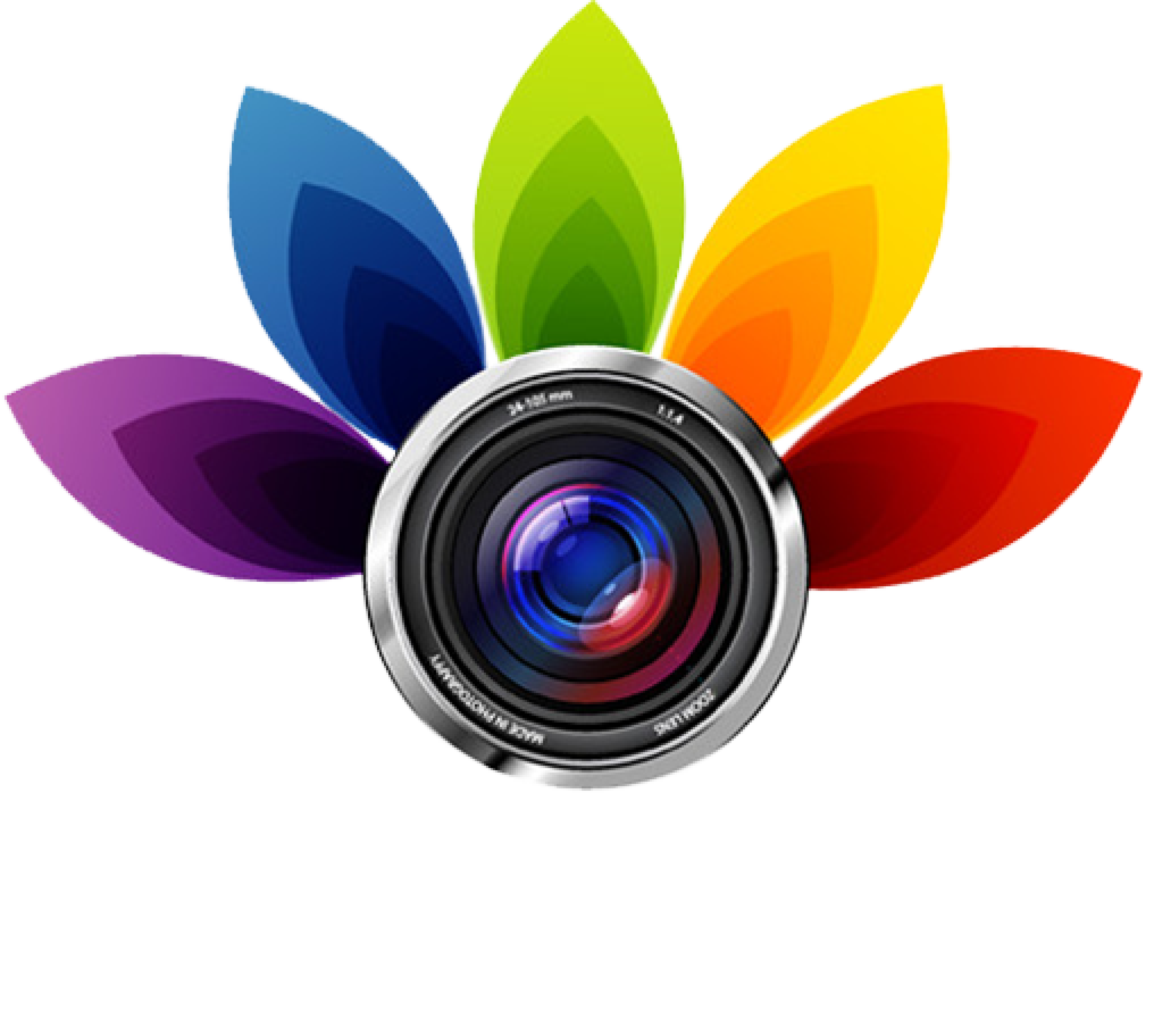
5 Business Headshot Mistakes to Avoid in your Photoshoot
Your business headshot is more than just a profile picture , it’s often the first thing people notice about you. Before a client meets you in person, before an employer calls you for an interview, and before a business partner signs a deal, they may already have formed an opinion from your photo. That one image can shape how others see your personality, professionalism, and credibility. If it looks polished and approachable, you’re more likely to create trust and interest. If it appears rushed or unprofessional, it could leave the wrong impression. Unfortunately, many people make common business headshot mistakes that hurt rather than help their image.
Many people underestimate the planning that goes into a strong business headshot. They might think it’s as simple as standing in front of a camera and smiling. But the truth is, a headshot involves careful thought about clothing, lighting, facial expressions, background, and even post-shoot adjustments. The smallest mistake can affect the overall look and feel of the image. In this guide, we’ll go through.
Here’s 5 Business Headshot Mistakes to Avoid in your Photoshoot
Not Preparing Before the Shoot
 One of the biggest mistakes people make is thinking a business headshot is just a quick picture. Skipping preparation often leads to photos that feel awkward or don’t represent your professional image. The way you dress, your hairstyle, and even small details like accessories can influence how people perceive you. If you don’t take time to plan, you may end up feeling uncomfortable or unsure during the shoot. Think about what works for your industry and the message you want to share.
One of the biggest mistakes people make is thinking a business headshot is just a quick picture. Skipping preparation often leads to photos that feel awkward or don’t represent your professional image. The way you dress, your hairstyle, and even small details like accessories can influence how people perceive you. If you don’t take time to plan, you may end up feeling uncomfortable or unsure during the shoot. Think about what works for your industry and the message you want to share.
A lawyer or corporate executive may choose a formal suit and a serious expression to project authority. A designer or photographer might opt for a more creative, relaxed look to reflect their personality. Clothing should fit well and be free from wrinkles, as these small touches show attention to detail.
Tips for preparing your headshot:
- Choose clothes that match your profession and personal brand.
- Check for wrinkles or loose threads before the shoot.
- Decide on a hairstyle and makeup look in advance.
- Bring an extra outfit for variety.
- Avoid large, distracting accessories unless they are part of your brand.
Poor Use of Lighting
Lighting can make or break a headshot, yet it’s one of the most overlooked factors. Bad lighting can cause harsh shadows, washed-out skin, or uneven tones that distract from your features. It can also make your photo feel flat and unprofessional.
 The goal is to have light that softens your features and adds a natural glow to your face. If possible, schedule your shoot during the golden hour just after sunrise or before sunset, for a softer, warmer effect. When indoors, position yourself near a window for gentle daylight. If that’s not possible, use artificial light with soft diffusers like a softbox to avoid harsh glare. Keep the light source at face level to prevent deep shadows under the eyes or chin.
The goal is to have light that softens your features and adds a natural glow to your face. If possible, schedule your shoot during the golden hour just after sunrise or before sunset, for a softer, warmer effect. When indoors, position yourself near a window for gentle daylight. If that’s not possible, use artificial light with soft diffusers like a softbox to avoid harsh glare. Keep the light source at face level to prevent deep shadows under the eyes or chin.
Lighting tips for a great headshot:
- Avoid harsh overhead lighting that creates unflattering shadows.
- Position the light in front of you, not behind.
- Use soft light sources to even out skin tones.
- Test the setup before starting the shoot.
- Adjust the angle until your features look balanced and natural.
Awkward or Forced Expressions
 Your expression plays a big role in how others interpret your headshot. A stiff smile or tense look can make you seem uncomfortable or unapproachable. On the other hand, an overly serious expression might give the impression that you’re distant or uninterested. Aim for a natural, relaxed look that reflects the personality you want to show in your professional role. A slight, genuine smile often works well for most industries, as it shows confidence and friendliness. Think of something pleasant or visualize a positive memory, this helps create a natural warmth in your eyes.
Your expression plays a big role in how others interpret your headshot. A stiff smile or tense look can make you seem uncomfortable or unapproachable. On the other hand, an overly serious expression might give the impression that you’re distant or uninterested. Aim for a natural, relaxed look that reflects the personality you want to show in your professional role. A slight, genuine smile often works well for most industries, as it shows confidence and friendliness. Think of something pleasant or visualize a positive memory, this helps create a natural warmth in your eyes.
Expression tips for a natural look:
- Avoid forcing a smile, think of something that genuinely makes you happy.
- Relax your shoulders and jaw before the camera clicks.
- Use your eyes to show warmth and connection.
- Practice in front of a mirror to see what works best.
- Keep your head slightly tilted for a softer, friendlier appearance.
Choosing the Wrong Background
The background should support your image, not compete with it. A cluttered or distracting setting can pull attention away from your face and make the photo look messy. On the other hand, a plain but well-chosen backdrop keeps the focus on you and reinforces your professional look.
 Neutral tones often work best for business headshots, as they help you stand out without overwhelming the viewer. Outdoor locations can also work well if the background is slightly blurred, keeping the attention on your face. For creative roles, an environmental background that hints at your work can be effective, just make sure it’s clean and visually appealing.
Neutral tones often work best for business headshots, as they help you stand out without overwhelming the viewer. Outdoor locations can also work well if the background is slightly blurred, keeping the attention on your face. For creative roles, an environmental background that hints at your work can be effective, just make sure it’s clean and visually appealing.
Tips for selecting the right background:
- Choose plain, neutral colors that won’t compete with your outfit.
- If outdoors, blur the background to keep focus on you.
- Avoid busy patterns, messy spaces, or distracting objects.
- Use backgrounds that subtly reflect your profession when appropriate.
- Keep it simple to make sure that your face is the main point of interest.
Skipping Photo Editing
 Even the best raw photos can benefit from small refinements. Skipping this step can leave your headshot looking unfinished or uneven. Editing doesn’t mean changing your appearance, it’s about polishing the image so it looks clean, sharp, and professional. Simple edits like adjusting brightness and contrast, correcting colors, and removing small blemishes can make a big difference. Cropping is also important; a poorly framed photo can feel unbalanced. Aim to keep the top of your shoulders and your full head in the frame. The goal is to present a refined version of yourself without losing authenticity.
Even the best raw photos can benefit from small refinements. Skipping this step can leave your headshot looking unfinished or uneven. Editing doesn’t mean changing your appearance, it’s about polishing the image so it looks clean, sharp, and professional. Simple edits like adjusting brightness and contrast, correcting colors, and removing small blemishes can make a big difference. Cropping is also important; a poorly framed photo can feel unbalanced. Aim to keep the top of your shoulders and your full head in the frame. The goal is to present a refined version of yourself without losing authenticity.
Editing tips for a polished result:
- Adjust brightness and contrast for clarity.
- Remove small distractions like stray hairs or lint.
- Keep edits simple to maintain a natural look.
- Crop carefully so your head and shoulders are well-framed.
- Correct colors if lighting made them appear off-tone.
Conclusion
A business headshot can open doors and leave a lasting impression. It’s more than just a picture, it shows people who you are and what you stand for. By avoiding common business headshot mistakes like poor lighting, the wrong background, or forced expressions, you can create a photo that looks both professional and genuine. Taking time to prepare, choosing the right setting, and doing light editing can make a big difference. Your headshot should reflect your confidence, personality, and attention to detail. With a little planning, you can present yourself in the best possible way and make a strong first impression.
Read Next: How to Make Attractive AI Product Photos for Ecommerce Shops





